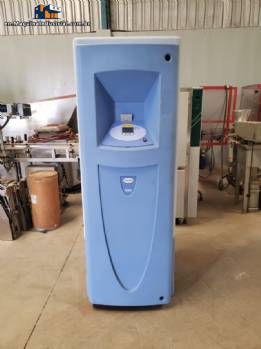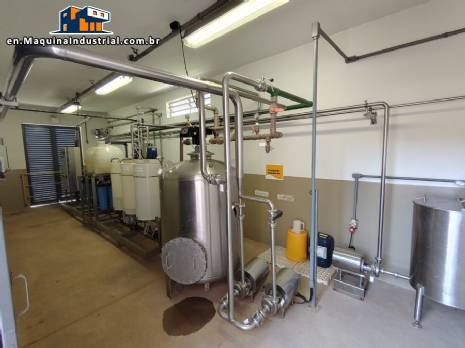Osmosis systems are designed to carry out the process of osmosis, a natural phenomenon that involves the passage of solvents from a region of lower concentration to a region of higher concentration through a semipermeable membrane. This process is often used to purify water and remove contaminants. Let's explore what they are for, how they work and the types of osmosis systems:
What are worth for:
Water Purification: Osmosis systems are often used to purify water by removing impurities, contaminants and unwanted minerals.
Desalination: In some cases, reverse osmosis is applied to remove salt from seawater, making it suitable for consumption or industrial use.
Effluent Treatment: Osmosis systems can be used to treat industrial effluents to remove pollutants and harmful substances.
How it works:
Osmosis: The process of osmosis involves passing solvents, usually water, through a semipermeable membrane into a more concentrated solution.
Reverse Osmosis: In the case of reverse osmosis, pressure is applied to the concentrated solution, reversing the natural flow and forcing the water to pass through the membrane, leaving behind unwanted solutes.
Filtration: The semi-permeable membrane acts as a filter, trapping unwanted particles, ions and molecules while allowing purified water to pass through.
Types of Osmosis Systems:
Direct Osmosis: Refers to the natural process of osmosis, where water flows through a semi-permeable membrane towards the more concentrated solution.
Reverse Osmosis (RO): This is the most common type of osmosis system used for water purification. It involves applying pressure to reverse the natural flow of osmosis, removing impurities and contaminants from the water.
Nanofiltration (NF): An intermediate technology between reverse osmosis and ultrafiltration, used to retain larger ions and organic compounds.
Ultrafiltration (UF): Although not strictly an osmosis process, ultrafiltration also uses semipermeable membranes to remove particles, bacteria, and macromolecules from water.
Reverse Osmosis Desalination: Specifically used to remove salt from seawater, making it suitable for human consumption or industrial use.
Applications:
Drinking Water Supply: Reverse osmosis is widely used to purify drinking water.
Pharmaceutical and Electronics Industry: Use in manufacturing processes that require ultra-pure water.
Agriculture: Water treatment for irrigation in regions with water scarcity.
Desalination: Production of drinking water from seawater.
Benefits:
Efficiency in Contaminant Removal: Osmosis systems, especially reverse osmosis, are highly efficient in removing a variety of contaminants, including ions, bacteria and particles.
Versatility: They can be applied in different contexts and sectors to meet different water purification needs.
Sustainability: Reverse osmosis is considered a more sustainable approach to desalination compared to conventional methods.
In summary, osmosis systems play a crucial role in water purification and effluent treatment, contributing to the availability of drinking water and meeting the demands of various industries. The choice of system type depends on the specific characteristics of the water to be treated and the objectives of the process. |





